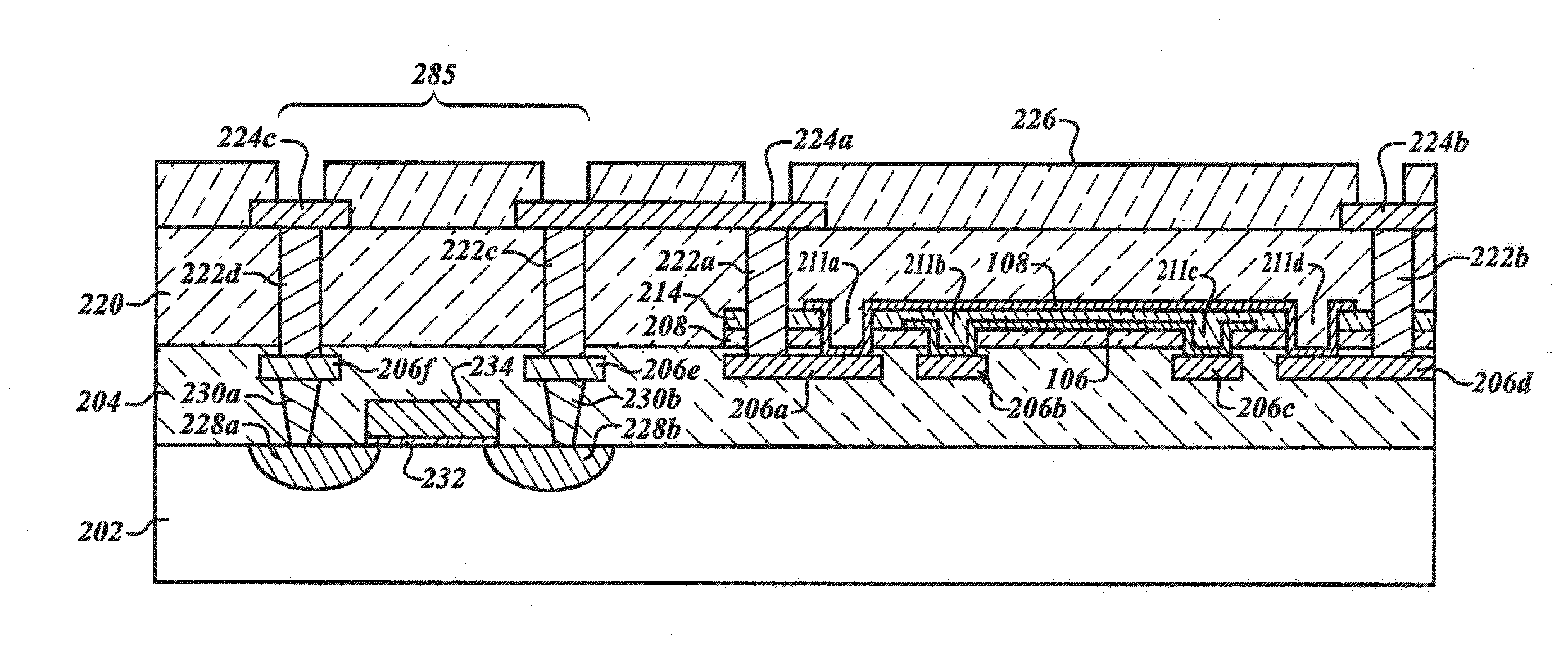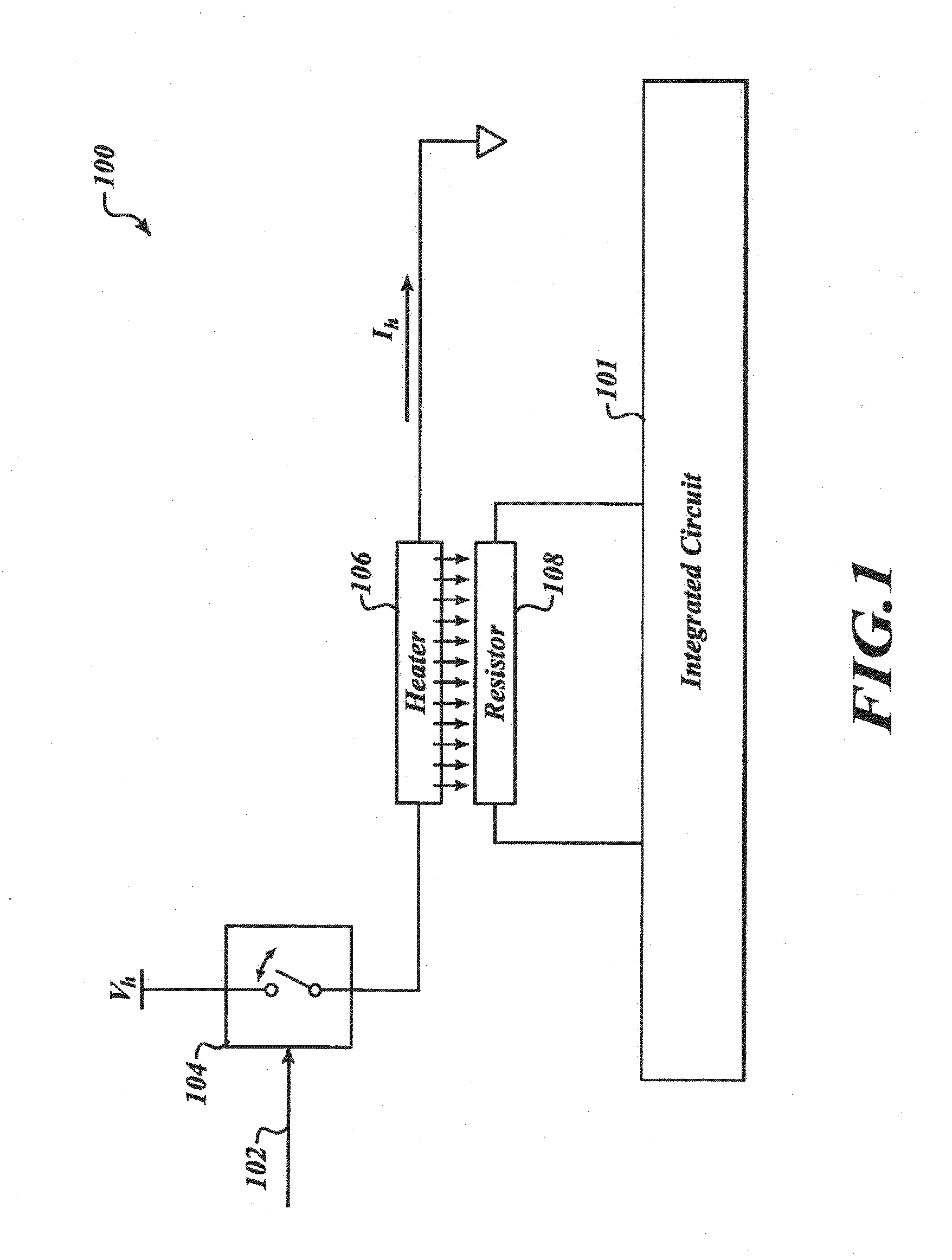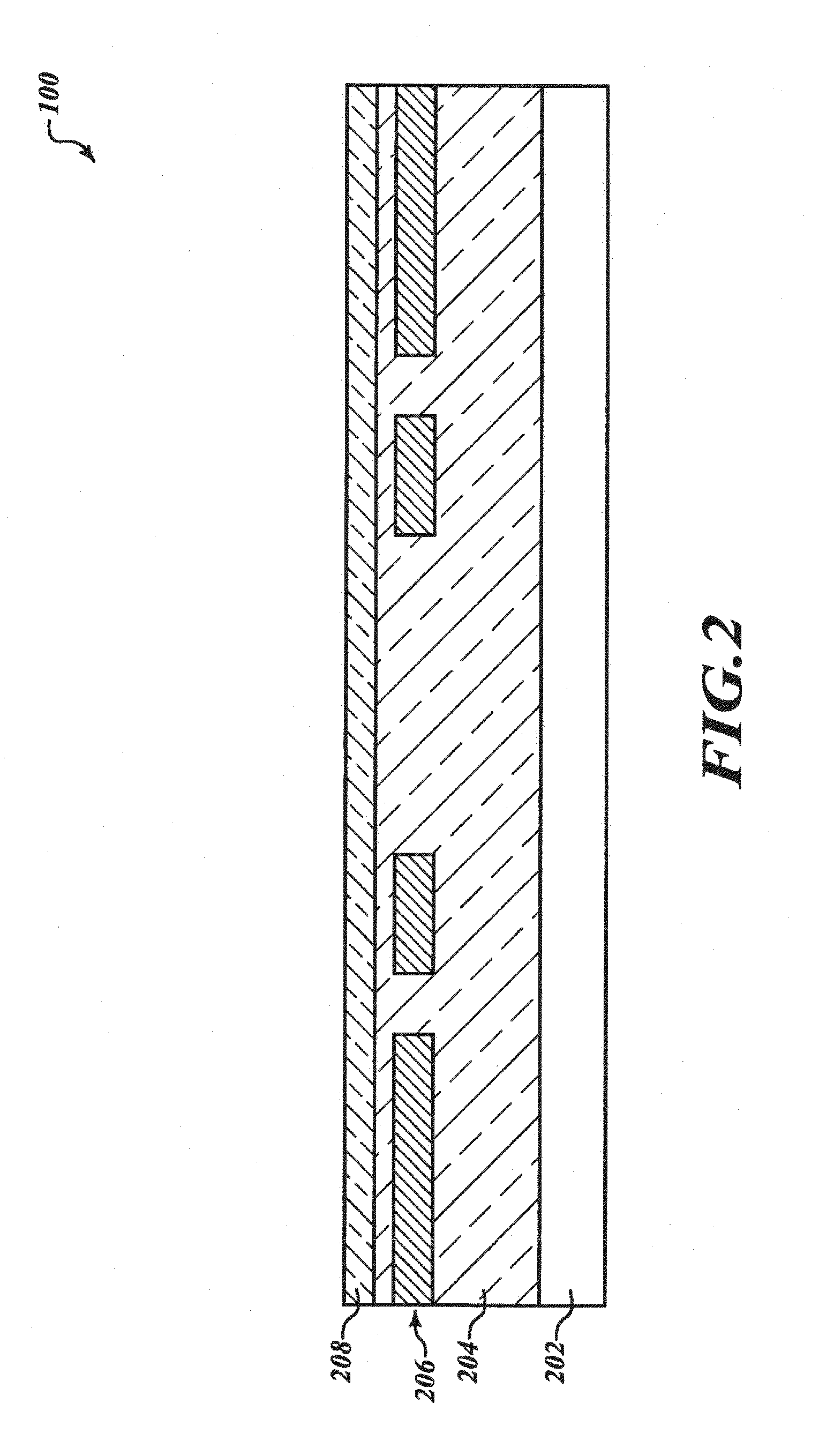Heater design for heat-trimmed thin film resistors
a thin film resistor and heat-trimmed technology, applied in resistors, non-adjustable resistors, coatings, etc., can solve problems such as changing the resistance of resistors
- Summary
- Abstract
- Description
- Claims
- Application Information
AI Technical Summary
Benefits of technology
Problems solved by technology
Method used
Image
Examples
examples
[0143]Several experiments were carried out to investigate effects of heater design variations on heating efficiency and performance of a heat-trimmable, thin-film resistor. In the experiments, three designs were trialed. The designs tested are depicted in FIGS. 26A-26C. The first design, depicted in FIG. 26A, included a leg of electrically conductive material 605 that provided current to distributed heater 620. The electrically-conductive material 605 had significantly lower sheet resistance than that of the heater. The heater comprised an active region 640 patterned to have a plurality of straight legs of length L and width W. The active area was configured to be in close proximity to an underlying resistive element (not shown). There were significant portions of the heater that did not overly the resistive element and were of the same material and thickness as the active region. Connection between the heater 620 and conductive material 605 was established through a plurality of vi...
PUM
 Login to View More
Login to View More Abstract
Description
Claims
Application Information
 Login to View More
Login to View More - R&D
- Intellectual Property
- Life Sciences
- Materials
- Tech Scout
- Unparalleled Data Quality
- Higher Quality Content
- 60% Fewer Hallucinations
Browse by: Latest US Patents, China's latest patents, Technical Efficacy Thesaurus, Application Domain, Technology Topic, Popular Technical Reports.
© 2025 PatSnap. All rights reserved.Legal|Privacy policy|Modern Slavery Act Transparency Statement|Sitemap|About US| Contact US: help@patsnap.com



